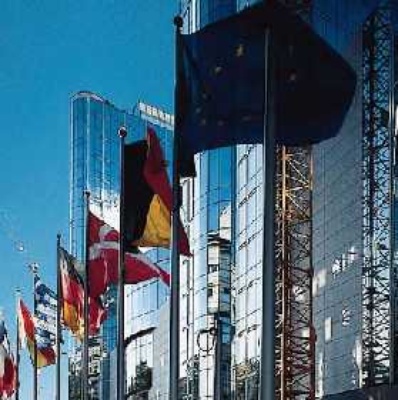
New Managing Director for Bellona Norway
The Board of the Bellona Foundation has appointed former Minister of Climate and the Environment Sveinung Rotevatn as Managing Director of Bellona No...
News

Publish date: November 6, 2008
Written by: Anne Karin Sæther
Translated by: Ola Innset
News
“We are approaching an historical moment in the development of EU’s climate policy. What the EU decides now will set important standards in many areas that will have great international significance,” said Eivind Hoff of Bellona Europa in Brussels.
In March 2007 the EU countries agreed to cut their CO2 emissions by at least 20 percent (30 percent if other main stakeholders would also commit to CO2reductions), and an increase in the share of renewable energy of 20 percent. Both targets are to be met by 2020. The EU heads of government also decided to build 10-12 demonstration facilities for carbon capture and storage (CCS) by 2015.
From the Commission to the Parliament
In January this year the European Commission presented a series of suggestions on how these targets could be translated into bills and other concrete measures. These suggestions are often referred to as the climate and energy package.
In the European Parliament these issues belong to the environment committee and the industry committee. In the past months, these committees have been voting on the suggestions in the climate and energy package, and in many cases the Parliament have gone further in shaping the suggestions in a more environmentally friendly fashion than was the case in the original proposal from the Commission. This is in large part due to effective lobbying of NGOs such as Bellona.
Now the time has come to take the climate and energy package to a plenary vote in the European Parliament and the European Council.
Decision in December?
France and its President Nicolas Sarkozy hold the chair of the European Council, and they have made the other countries agree that the climate and energy package will be passed before the end of the year.
France is putting a lot of effort into the work on the package and wants to make sure that all policies are set before Czech Republic takes over the chair in January. The Czechs are not known to have especially ambitious climate goals.
This means that the 27 member countries will have to agree upon the package during the next summit meeting on the 11th and 12th of December. At the last summit meeting in Brussels in September, the heads of state agreed that the climate and energy package must be passed unanimously. This is something that may lead to horse trading and watering down of some of the package’s crucial elements.
A four part package
Roughly speaking, the climate and energy package is divided into four parts. The first part is a revision of the directive for the EU’s emissions trading system (ETS). A central issue here is weather the allowances should be handed out for free, or sold through auctioning. The Commission and the environment committee of the Parliament want the energy sector to pay for all allowances from 2013, and want the auctioning of allowances to be introduced gradually in all other sectors, with all allowances being auctioned from 2020.
A proposal to use allowances to pay for the first CCS-projects is part of the discussion on the emissions trading systems directive.
Part two of the legislative package is a decision on how to reduce emissions from sectors that are not covered by the emissions trading system. Over 50 percent of the EU’s emissions fall into this category. The European Commission has proposed a sharing of efforts between the member countries where each country will be free to select their own measures, as long as they meet the demands set forth.
The environment committee has proposed a penalty for the countries that are unable to fulfill their obligations.
Renewable energy and CCS
Part three of the legislative package concerns the set target that 20 percent of the energy consumed within the EU should come from renewable sources within 2020. In 2005 the percentage renewable energy was only 8.5 percent. The details on how big each country’s contribution should be are falling into place now, but for the renewable policy to be effective there needs to be some sort of penalty for the countries who don’t step up.
The fourth part is a directive for the geological storage of CO2. This directive aims to make sure that all CO2 captured from coal fired power plants and other emission points are stored in a secure fashion.
Mandatory capture
Bellona has been working intensively to contribute to the modeling of the CO2 storage directive. Politically, the most interesting point in this directive is the suggestion to place a cap on the maximum amount of grams of CO2 emitted per kilowatt hour of electricity produced within the EU.
The Environmental Committee of the European Parliament wants this cap to be 500g. In practice, this would make CCS mandatory.
A number of countries oppose making CCS a mandatory part of the energy sector. Bellona however, is working very hard to make the environmental demands even tougher than the ones already suggested.

The Board of the Bellona Foundation has appointed former Minister of Climate and the Environment Sveinung Rotevatn as Managing Director of Bellona No...

Økokrim, Norway’s authority for investigating and prosecuting economic and environmental crime, has imposed a record fine on Equinor following a comp...

Our op-ed originally appeared in The Moscow Times. For more than three decades, Russia has been burdened with the remains of the Soviet ...

The United Nation’s COP30 global climate negotiations in Belém, Brazil ended this weekend with a watered-down resolution that failed to halt deforest...